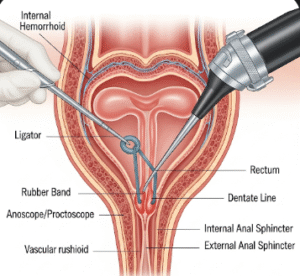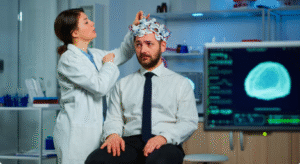Overview
Goniotomy is a type of eye surgery used to treat glaucoma, particularly in children with congenital glaucoma or in select cases of adult glaucoma. It involves creating an opening in the eye’s drainage system (trabecular meshwork) to help fluid (aqueous humor) flow more easily, thereby reducing intraocular pressure (IOP). Lowering IOP is the most effective way to prevent or slow optic nerve damage and vision loss caused by glaucoma.
South Korea is one of the leading countries for advanced glaucoma treatment, including goniotomy. With cutting-edge surgical equipment, highly trained ophthalmologists, and advanced micro-surgical techniques, Korea has become a top choice for both domestic and international patients seeking safe and effective eye care.
What is Goniotomy?
Goniotomy is a minimally invasive glaucoma surgery (MIGS) performed inside the eye. It is especially effective for primary congenital glaucoma, a condition that affects infants and young children, although in recent years it has also been used in selected adult patients with open-angle glaucoma.
During the procedure, the surgeon uses a special instrument called a goniotomy knife or goniotomy blade under a gonioscopy lens (a special microscope lens) to cut into the trabecular meshwork, improving fluid drainage and lowering eye pressure.
This procedure helps preserve vision and reduces the need for long-term use of glaucoma medications.
What are the benefits?
Goniotomy offers several key benefits for glaucoma patients:
- Effective pressure control → Reduces intraocular pressure significantly.
- Vision preservation → Prevents or slows optic nerve damage.
- Less invasive → Compared to traditional glaucoma surgeries like trabeculectomy.
- Quick recovery → Faster healing with less discomfort.
- Reduced reliance on medications → Many patients need fewer eye drops after surgery.
- Particularly beneficial for children → Considered the treatment of choice for congenital glaucoma in infants.
- Advanced Korean techniques → Surgeons often use modern MIGS devices and image-guided systems to enhance precision.
Procedure Details
1) How should I prepare for Goniotomy?
Preparation is relatively simple but important:
- Eye examination: Comprehensive tests including gonioscopy, intraocular pressure measurement, and optic nerve evaluation.
- Medical history review: To check for other eye conditions or systemic diseases.
- Anesthesia plan: Children usually require general anesthesia, while adults may undergo local anesthesia with sedation.
- Medication adjustment: Patients may need to stop blood thinners temporarily.
- Fasting: Required if general anesthesia is planned.
- Parental guidance: For pediatric cases, parents are counseled about postoperative care and follow-up visits.
2) What happens during the procedure Goniotomy?
The surgery typically takes 30–60 minutes and involves the following steps:
- Anesthesia: Infants and children usually receive general anesthesia; adults may have local anesthesia.
- Gonioscope placement: A special lens is placed on the cornea to provide a clear view of the drainage angle.
- Trabecular meshwork incision: Using a goniotomy knife or micro-surgical blade, the surgeon makes a small cut in the trabecular meshwork, opening the blocked drainage channels.
- Fluid outflow improvement: This allows aqueous humor to drain more easily, lowering intraocular pressure.
- Completion: The lens is removed, and sometimes a protective contact lens or bandage may be placed temporarily.
3) What happens after a Goniotomy?
Recovery is usually smooth, but close monitoring is essential:
- Immediate post-op: Patients may experience mild redness, irritation, or blurred vision for a few days.
- Eye drops: Antibiotic and anti-inflammatory drops are prescribed to aid healing.
- Follow-up visits: Frequent checkups in the first few weeks to monitor intraocular pressure.
- Children’s recovery: Infants and young children usually respond well, but multiple surgeries may sometimes be needed.
- Return to activities: Most adults resume normal activities within a few days; children may take a little longer.
Risks / Benefits
Risks
Although goniotomy is generally safe, possible risks include:
- ➤ Bleeding inside the eye (hyphema)
- ➤ Scarring of the drainage opening, which may reduce effectiveness
- ➤ Need for repeat surgery if pressure rises again
- ➤ Infection (rare but serious)
- ➤ Damage to nearby eye structures (very rare with experienced surgeons)
Benefits
- ➤ Highly effective for congenital glaucoma
- ➤ Minimally invasive compared to trabeculectomy or tube shunt surgery
- ➤ Quick recovery and fewer complications
- ➤ Reduced medication dependency
- ➤ Proven long-term outcomes in Korea
Recovery and Outlook
- Short-term recovery: Redness and blurred vision usually improve within days to weeks.
- Hospital stay: Most patients go home the same day. Children may need overnight observation.
- Follow-up care: Regular checkups and eye pressure monitoring are essential.
- Success rates: In Korea, success rates for congenital glaucoma are among the highest globally, due to early detection and expert surgical care.
- Long-term outlook: Many patients achieve stable eye pressure and preserved vision for years, though some may need additional surgeries or medications.
When To Call the Doctor
Patients should contact their doctor immediately if they experience:
- ⚠️ Severe pain or worsening redness
- ⚠️ Sudden vision loss or persistent blurriness
- ⚠️ Excessive tearing or discharge
- ⚠️ Swelling around the eye
- ⚠️ Signs of infection such as fever or pus
Best Korea Option / Process
South Korea is recognized as a world-class destination for glaucoma care.
Why Korea is the best option for Goniotomy:
- Specialized pediatric ophthalmology centers for congenital glaucoma.
- Highly skilled surgeons with international training and vast experience in MIGS and glaucoma surgery.
- Cutting-edge equipment: Image-guided surgery, high-resolution gonioscopes, and advanced surgical tools.
- Affordable costs compared to the US, Japan, or Europe.
- Integrated care: Multidisciplinary teams including ophthalmologists, anesthesiologists, and pediatric specialists.
Top hospitals in Korea for Goniotomy and glaucoma treatment include:
- Seoul National University Hospital (SNUH) – Leading in pediatric ophthalmology.
- Asan Medical Center – Advanced glaucoma unit.
- Samsung Medical Center – Known for innovative MIGS procedures.
- Yonsei Severance Hospital – Offers comprehensive eye care for international patients.
👉 For patients with congenital or complex glaucoma, Goniotomy in Korea provides safe, effective, and affordable treatment options, supported by some of the world’s best ophthalmic surgeons.













